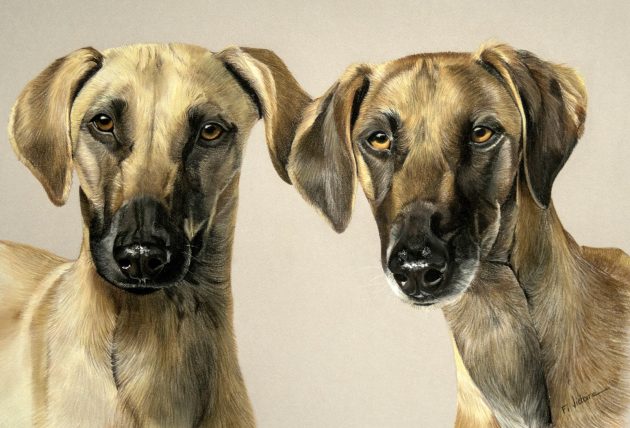
If you’ve ever danced or gone “clubbing” in places lit by black lights, you’ll know how white and neon colored clothing, and posters painted with “dayglow” paint “pop” under them.
In a dark setting, black lights often have a purplish glow, but what you can’t see is the ultraviolet light the bulbs are also producing. Ultraviolet light is the type of electromagnetic radiation that makes white and black-light posters glow, but it’s also what is responsible for summer tans (and sunburns). Decades after many of us of a certain age smeared Hawaiian Tropic suntan lotion all over ourselves in pursuit of that “healthy tan color,” we now know that too much exposure to UV radiation isn’t all that good for us. Ultraviolet constitutes only about 10% of the total electromagnetic radiation output from the Sun, but 90% of skin carcinomas are attributed to UV-B exposure, this according to NASA.
When skin is especially susceptible to damage by ultraviolet light, the person (or animal) wearing that skin is said to be photosensitive. Photosensitivity in dogs is not sunburn, though it may look like one. Certain molecules in the skin are energized by light, but when the molecules go back to a less energized state, the released energy causes chemical reactions in the skin (note that photosensitization can also show up in dogs that have liver damage caused by different types of poisoning). Photosensitive dogs are not only uncomfortable in sunlight (they might scratch themselves, or rub at their ears, eyelids, or muzzle) but bright sunlight can cause skin changes.
Most Sloughis were bred and kept in several countries included in the large swatch of the Sahara Desert. Color and pigmentation, then, are essential (if not critical) characteristics in the breed because “they relate directly to the harsh environment in which the breed was developed” (from the American Sloughi Association Judges’ Education video on colors of the Sloughi). Sloughis have two types of pigment in their coat, eumelanin which produces black and brown colors, and phaeomelanin, which produces red and yellow colors. The combination of these pigments and their distribution on the dog’s coat determines its color and pattern. Melanin which helps protect against harmful ultraviolet rays.
The underlying coat color in the Sloughi is sand, though it can vary in shading and intensity. Sloughis can be brindle, they can have a dark overlay, or they can have a black mantle (known as black and tan or black and brindle in some other breeds). They may have black ears, muzzle and/or tail, or a combination of the aforementioned, but colors outside of the aforementioned, such as blue, chocolate, solid black, and white which exist in the breed are, nonetheless, disqualifications. Our understanding is that many of the coat colors were no longer accepted by the FCI after Morocco took over the standard in 1973.
So too, a majority of depigmented or white nails, and anything less than excellent pigmentation on the nose, eye rims and lips, are disqualifications.
Why the specificity over color?
The driest and hottest regions of the world include Morocco, Tunisia, Algeria and Libya, countries where the Sloughi was developed and hunted over by tribesmen. It was no place for “sissy dogs,” nor a place where a dog’s color could subvert its success on a hunt. A flesh colored nose can sunburn more easily than a deeply pigmented one. Light colored eye rims reflect glare from sand more so than black eye rims. The breed standard’s accepted colors of “all shades of light sand (cream) to mahogany red fawn, with or without brindling or with or without black markings such as black mask, black ears, dark overlay, and black mantle (black and sand or black and brindle)” are better suited in heat than the darkest colors.
It matters.
Image of Sloughis by Flora Victory who renders art to order from photos. You can contact the artist and see more of her work here, as well as on her Facebook page.
